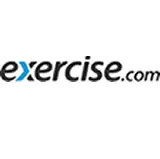Picture this: it's a nice, cool day and it's time for you to head to the gym for your favorite group exercise class. You head to class and realize that the schedule changed and it's a higher-level class being taught, but you've been exercising for awhile and you feel good about the challenge.
After warming up and starting the class for about 10 minutes you start feeling pretty thirsty and a little worn out. You also notice that your sweat is beading on your arms and dripping to the ground more than usual. You participate a little longer and realize you're starting to feel lightheaded and nauseous, but you're only halfway through the class and you want to finish it out. What should you do?
Heat-related illness doesn't just happen on extremely hot days. It doesn't just happen to athletes. And it doesn't just happen outdoors.
A recent study by the Center for Injury Research and Policy of The Research Institute at Nationwide Children's Hospital compiled 10 years worth of data to determine the who's, what's, when's, where's and how's of heat-related illness.
More: 5 Tips to Prevent Heat Illness
The Research
Who: Fifty two percent of individuals who suffer heat-related illness are adults over the age of 19 years.
What: More than half of the individuals who suffered illness experienced heat exhaustion. During heat exhaustion your body is working overtime to try to cool itself. You may experience severe sweating, nausea, vomiting, dizziness and increased heart rate.
If you do not take measures to cool yourself down during heat exhaustion, you could progress to the most severe form of heat-related illness: heat stroke. Heat stroke is a life-threatening illness marked by extremely high-body temperature, absence of sweating, disorientation, changes in consciousness and even seizures.
More: 15 Hydration Facts for Athletes
When: Seventy-five percent of all heat-related illnesses take place during sports or exercise; but, you must take note that 25 percent take place during every day activities like gardening, moving furniture or performing home maintenance.
- Among youth, football preseason practice accounted for almost half of all heat-related illnesses
- Among adults, golf was the primary scapegoat
How: While high temperatures outside are a pretty significant factor in heat-related illness, humidity is an even greater culprit. As you start exercising, your body's cooling system is designed to kick in and you're supposed to start sweating.
Your sweat is meant to evaporate and draw heat away from your body. When it's humid outside your sweat beads up on your arms and doesn't evaporate, trapping your heat in rather than airing it out. Your body fails to cool and just keeps ramping up the internal temperature.



